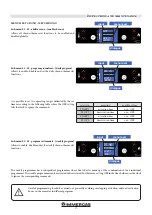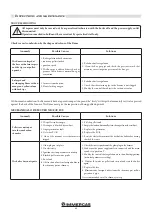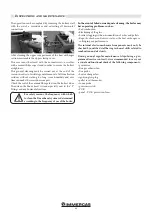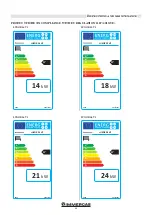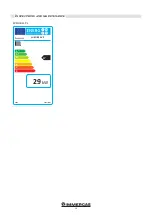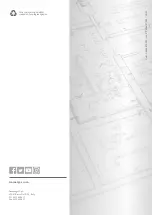
45
Inspections and maintenance
HEAT EXCHANGER CLEANING (WITH THE BOILER
OFF)
Scale acts as insulation and the thicker it is, the less heat
is transmitted to the water and the structure in general.
It is therefore very important to clean the shell and tube, also
known as heat exchanger, to avoid the onset of its scaling and
prevent clogging and jamming of the cleaning device. Simply
pull and push the lever rapidly 5-6 times so that the springs can
remove any soot deposited on the pipes.
CHECKS EVERY 2-3 DAYS
Clean the compartment around the brazier (the fire surface)
from ashes, being careful of hot ashes. It is only possible to use
a suitable dustbuster to vacuum particles of a certain size when
the ashes are completely cold.
Cleaning the ash drawer and combustion chamber, including
the glow plug duct.
DEFLECTOR CLEANING - STAINLESS STEEL AND
SATIN SURFACES
It is not usually required to treat these surfaces and is sufficient
to avoid cleaning them with abrasive materials. With regard to
steel surfaces, it is recommended to clean them with a paper
towel or a clean, dry cloth soaked in non-ionic surfactant
detergents ( <5%).
A glass or mirror detergent spray is also good.
The detergent must not come into contact with
skin and eyes. If this happens, wash under
running water and go to the closest health clinic.
CLEANING PAINTED PARTS
Do not clean painted parts with damp cloths when the product
is running or hot. This is to avoid a thermal shock of the paint
and its consequent detachment. Silicon paints have technical
properties that can withstand very high temperatures.
However, there is a physical limit (380 °C - 400 °C) beyond
which the paint loses its properties and starts to “whiten”, or
(over 450 °C) “vitrify” and may peel off and detach itself from
the steel surface. If these effects occur, it means the temperature
has reached well beyond those in which the product should
operate correctly.
Do not use abrasive or aggressive products or
materials. Clean with a paper towel or damp
cotton cloth.
CLEANING THE LOWER ASH DRAWER
It is recommended to clean the ash drawer from residues
that fell during operation. The ash drawer can be accessed
by removing the two wing nuts that secure the inspection
drawer. Remove the drawer, empty it and only clean the walls
and corners with an ash vacuum or with special tools. Then
reassemble the drawer and secure the wing nuts, making sure
to seal it, which is very important during operation.







